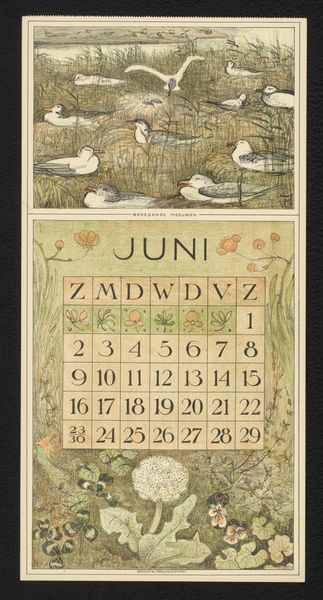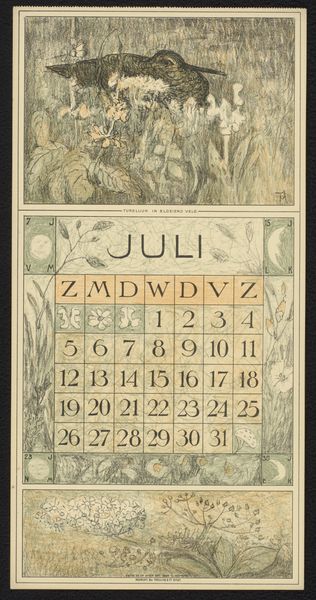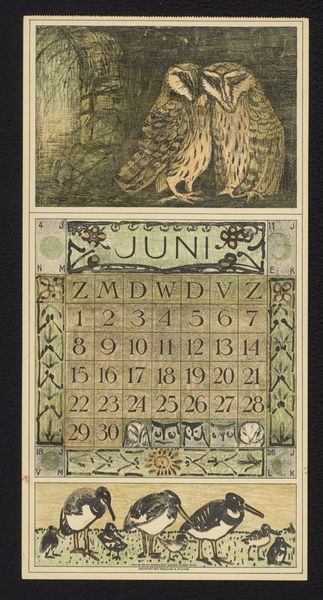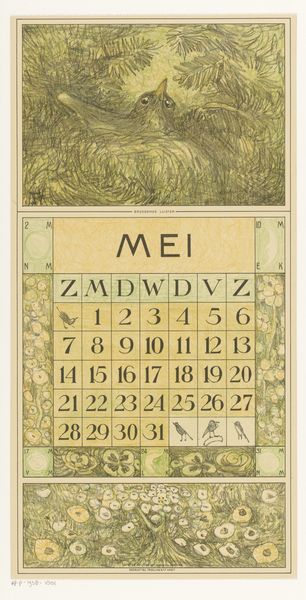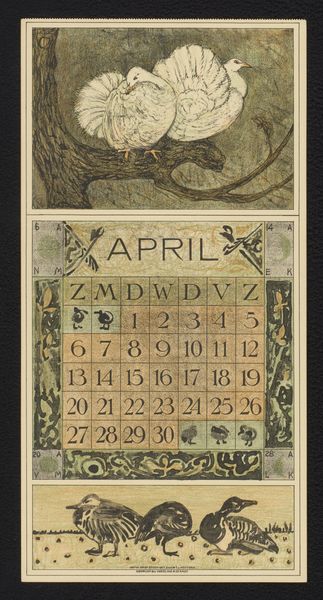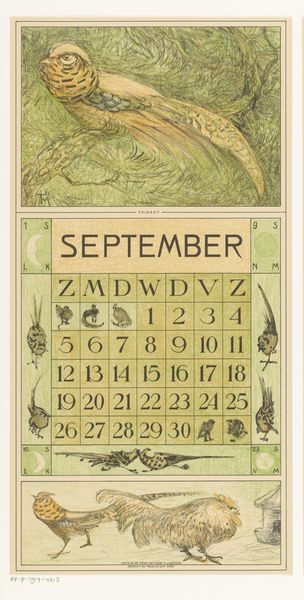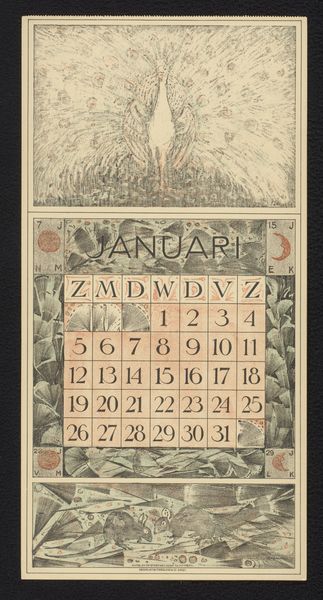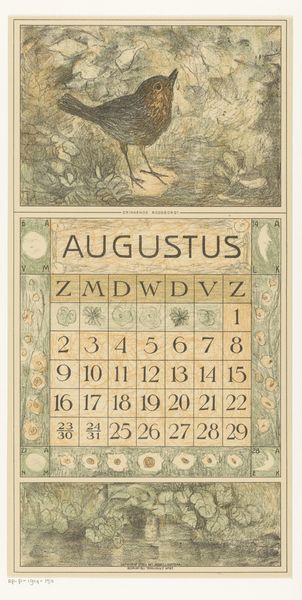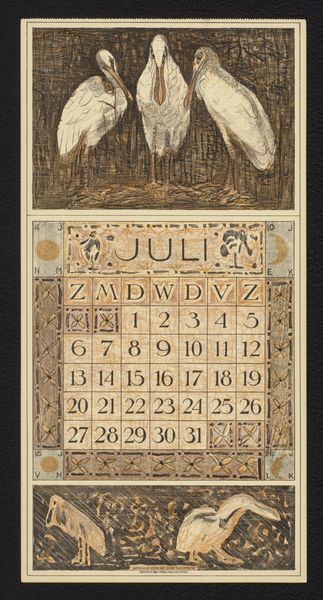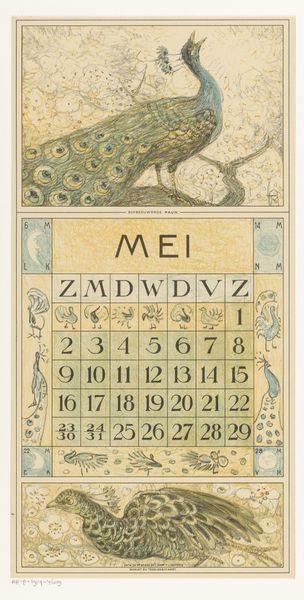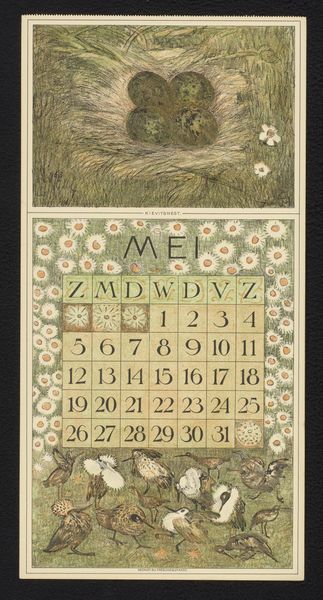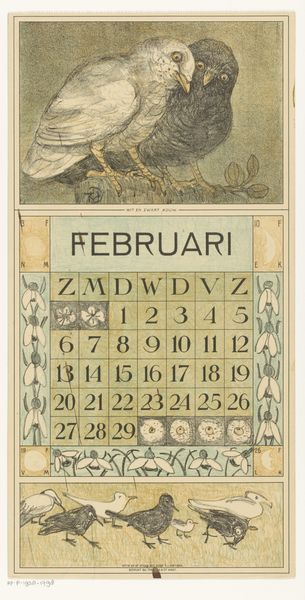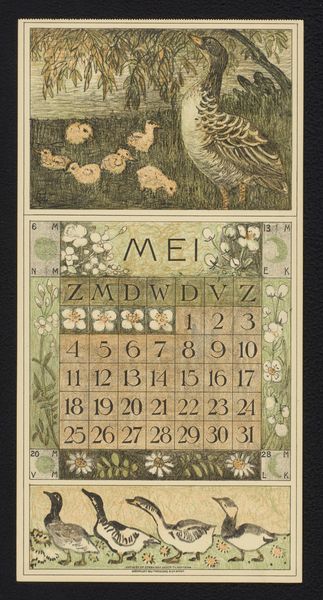
drawing, print, ink, poster
#
drawing
#
art-nouveau
# print
#
ink
#
symbolism
#
watercolour illustration
#
poster
#
botanical art
Dimensions: height 420 mm, width 210 mm
Copyright: Rijks Museum: Open Domain
Curator: Standing before us is Theo van Hoytema's "Kalenderblad juni met jonge vogels in een nest" or "June Calendar Sheet with young birds in a nest," created in 1915. This work, housed at the Rijksmuseum, employs a combination of print and drawing techniques with ink. What strikes you first? Editor: Immediately, it’s the yearning. The way those fledgling birds reach up, mouths agape, creates this palpable sense of hunger and need. It’s very affecting. Curator: The artist certainly captures the intensity of the nesting season. Considering Hoytema’s broader artistic output, his focus on ornithological illustration, particularly within the framework of commercial design like posters, prompts an inquiry into the industrial applications of art. What commentary can we derive about mass production and the commodification of the natural world from such imagery? Editor: Definitely, but it's not simply documentation, it's imbued with cultural meaning. Look at the positioning of the parent bird at the base of the calendar—grounded and solid while above, the new generation strains upward. To me, this highlights a visual hierarchy relating to knowledge transfer between generations and reflects colonial era values of patriarchy. Curator: Interesting, placing it in that power structure, certainly a way to interpret his intentions. Now let's dive into his technical methods. Can we regard it as the blurring of labor practices, like art and craft converging for advertising purposes? This also disrupts our comprehension of the aesthetic merits, whether high art or low culture? Editor: Absolutely! And further consider the social climate. Created in 1915, amidst the throes of the First World War, this idealized image of pastoral care and natural cycles could be read as a counter narrative and critique of societal destruction, but also reflects how the social hierarchy would fall into despair. Curator: The color palette also seems deliberately muted, almost restrained given the vibrancy typically associated with June and the birth of new life. Editor: Perhaps speaking to limitations of the printing process during that time? And yes, a visual representation of the constraints placed upon certain social demographics through patriarchal power systems. Overall, a commentary, both of that era, but still very appropriate for today. Curator: A fascinating discourse about the processes surrounding nature. Editor: An unsettling tension between reality and our perceptions. Thank you!
Comments
No comments
Be the first to comment and join the conversation on the ultimate creative platform.
